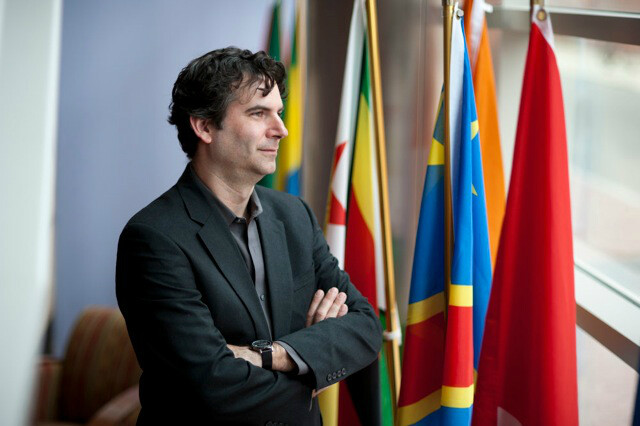Researcher at Penn Serves as a Thought Leader on Russian Foreign Policy
Mitchell Orenstein walks along an interdisciplinary line between political science and Slavic studies at the University of Pennsylvania.
His research sits at the intersection of comparative politics and global public policy, using a problem-driven research approach to ask –- and carefully answer -– big, policy-relevant questions when it comes to the happenings in and around Central and Eastern Europe.
Mainly, his work focuses on international affairs and political economy.
Orenstein teaches East European politics and international political economy at Penn, including a course that analyzes the geopolitical competition between the European Union and Russia over the political and economic futures of all of the countries that fall between the two powerhouses.
Right now, Orenstein is wrapping up a book, The Triumph of Neoliberalism in Eastern Europe, which explores why neoliberal economic policies took the region by storm after 1989. It also explains why these policies lasted for far longer and went much farther than analysts expected from formerly Communist countries with large welfare commitments and limited experience with capitalism.
A scholar of international politics with an eye on political economies of transition in Central and Eastern Europe, pension privatization and the role of policy paradigms in economic reform, Orenstein’s research has received numerous awards in the past from such organizations as the American and International Political Science associations, but he recently received his first teaching prize: the Alfred Rubin EPIIC Colloquium Award of the Tufts University Institute for Global Leadership.
The honor was for teaching an intensive, condensed course covering the state of Russia and Europe in international affairs to students in a year-long colloquium program at Tufts during an Outward Bound weekend retreat.
“I was very touched when the students selected me for the Rubin award for the best lecturer, since they had a star-studded cast of lecturers throughout the year,” Orenstein explains. “Their well-timed conference centered around the theme of ‘Turmoil in Europe.’ It was a success and serves as a great model for student international engagement.”
During the modified course, he covered the basics about the European Union, Russia’s domestic and international politics, how Russia differs institutionally from the European Union and a little background about the current state of the Ukraine.
In addition, Orenstein took the lead in organizing “Russian Foreign Policy in the Putin Era,” as part of the School of Arts & Sciences’ annual Penn Slavic Symposium in Philadelphia.
This year, Orenstein says, the Slavic department wanted its symposium to address real-world issues facing Russia and Eastern Europe, including the actions of Russian President Vladimir Putin, which have involved seizing territories, establishing a sphere of interest in the former Soviet Union and sending airplanes, troops and weapons to support the Assad government in Syria.
“We want to inform and grow our international affairs audience in Philadelphia around Russia and Eastern Europe, creating an opportunity for focused discussion among academic and think tank experts from different sides of the political spectrum,” Orenstein says.
To spark this intellectual discussion, Orenstein partnered with representatives of think tanks that differ greatly in their foreign policy views. This pairing of opposite viewpoints was by design.
“In Washington, these people rarely talk to one another,” Orenstein says. “In Philadelphia, we wanted to have a wide spectrum of discussion that is possible in an academic setting.”
Topics at the conference included: Putin’s grand strategy and objectives, history and prophecy in Russian strategy, Russo-German relations and the future of Europe, the leverage and dependence of Russia’s oil and gas politics and elements of a Western Russia strategy.
Looking ahead to the summer, Orenstein will be working on a second book, Russia vs. Europe and the Lands in Between.








